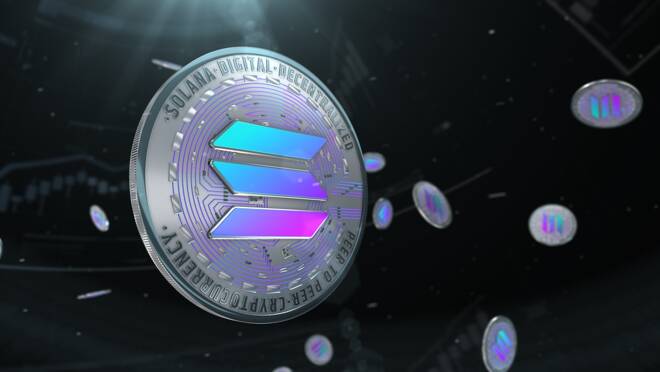Advertisement
Advertisement
Dragonfly Research Says Solana’s Speed Surpasses ETH & other Chains
By:
Research highlights that while Ethereum is the MS-DOS of smart contract operating systems, the current era of blockchains with Solana and other L-1s takes us into the Windows 95 era.
Key Insights
- Throughput (number of transactions in a particular time) on Solana surpassed the leading EVM chain by a wide margin.
- Researchers predict that competing layer-1 chains will outdo EVM chains.
- However, Solana’s network is still plagued by some issues that need to be addressed.
Dragonfly Research recently published an experiment comparing the performance of six blockchains by testing the capacity of automated market makers (AMMs) on each chain.
Reportedly, Solana’s Orca decentralized exchange (DEX) was the clear winner in trades per second. At the same time, Ethereum was called the ‘MS-DOS’ of blockchains.
Solana, however, has completely rebuilt its stack from the ground up and claims to be the fastest blockchain in existence. Researchers tested the capacity of AMMs on each blockchain.
They found that Solana’s Orca DEX was the fastest with trades per second of 273.34 transactions per second and new blocks every 590 milliseconds.
BNB Smart Chain came in next with 194.6 trades per second on PancakeSwap, followed by Polygon, Avalanche, Celo (CELO), and, finally, Ethereum.
The researcher “GM” further argued that while there was a rich ecosystem built on EVM compatible chains, the results highlighted that ‘if you want high performance now you have to look outside the EVM space.’ GM concluded that layer-1 blockchains could surpass EVM-compatible chains. He noted:
“Overall, I come away with this impression: Ethereum is the MS-DOS of smart contract operating systems. But the current era of blockchains takes us into the Windows 95 era.”
Solana Stealing the Thunder, But…
Blockchains that are compatible with Ethereum tooling are called EVM chains. They often help in the scalability of the Ethereum network. The experiment attempted to compare blockchain throughput by measuring the number of swaps that could be made per block on native automated market makers.
AMMs refer to decentralized exchanges such as Uniswap and PancakeSwap that facilitate non-custodial token swaps on-chain.
Uniswap v2 was the benchmark since it’s the dominant DEX with $1.6 billion in 7-day transaction volume. The standard was 18.38 transactions per second with 13.2 seconds per new block, according to the report.
While the report results highlighted Solana’s faster performance, proponents of decentralization note other issues on Solana.
The team from the Spookyswap DEX on Fantom Opera criticized the findings, saying that Solana’ is an entirely centralized network, unlike Ethereum.’ Furthermore, the many service outages on Solana have also plagued the grid of late.
Although none of the blockchains in the test were used to their total capacity, GM said they expect that “all of the major L1s will improve over time.”
Dragonfly Research is the research arm of Dragonfly Capital. Its portfolio page shows that it has invested in Celo, Avalanche, Cosmos, and Near. However, the firm does not hold Solana in its portfolio yet.
About the Author
Varuni Trivediauthor
A Journalism post-graduate with a keen interest in emerging markets across South East Asia, Varuni’s interest lies in the Blockchain technology. As a financial journalist, she covers metric and data-driven stories with a tinge of commentary, and strongly believes in HODLing.
Advertisement
